If there’s one word that could sum up our Canadian Rockies road trip, it would be: “WOW!”
“Wow, wow, wow,” was uttered multiple times a day. It escaped our mouths when the plains turned to mountains, when we were engulfed by majestic peaks along the Trans-Canada Highway, and each time we rounded a bend on a hiking trail. The natural beauty of the Canadian Rockies was astounding and I’m so glad I finally got to travel more of Canada!
Like most trips, this one started with a spontaneous thought: “Why don’t we take a road trip out to the Canadian Rockies?” I asked my parents. They had always wanted to visit, I had the time, it was the perfect season, and just like that, we found ourselves planning an end-of-summer road trip which included the dog!
There is a lot to write about our trip, but today we’ll start with some of the highlights.
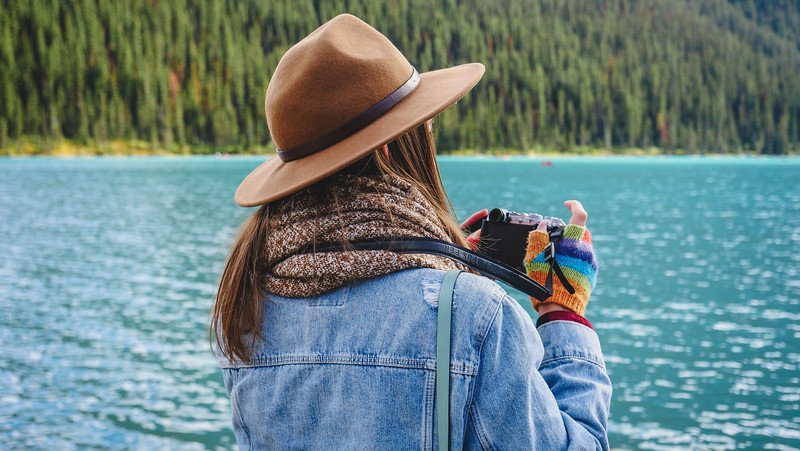
Canadian Rockies Travel Guide: Things to Do, See & Experience Visiting the Canadian Rockies!
Kananaskis Country
Kananaskis Country sits at the foothills of the Canadian Rockies, but don’t be fooled into thinking that the scenery will be any less spectacular here. This was actually one of our favourite drives and it was far less crowded than some of the more popular destinations we covered on our Canadian Rockies road trip.
We ended up driving to Lower & Upper Kananaskis Lakes so our dog, Togo, could splash in the water and he was in his element! He’s grown up in the suburbs and we kept commenting on how the wilderness had awakened some instincts we’d never seen in him before.
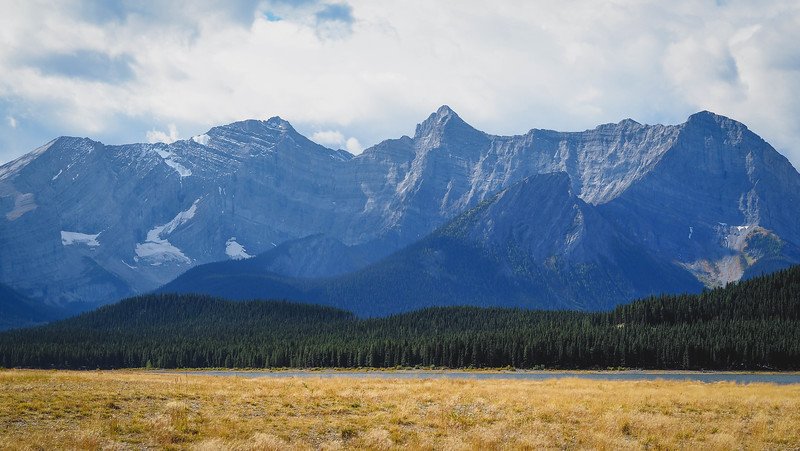
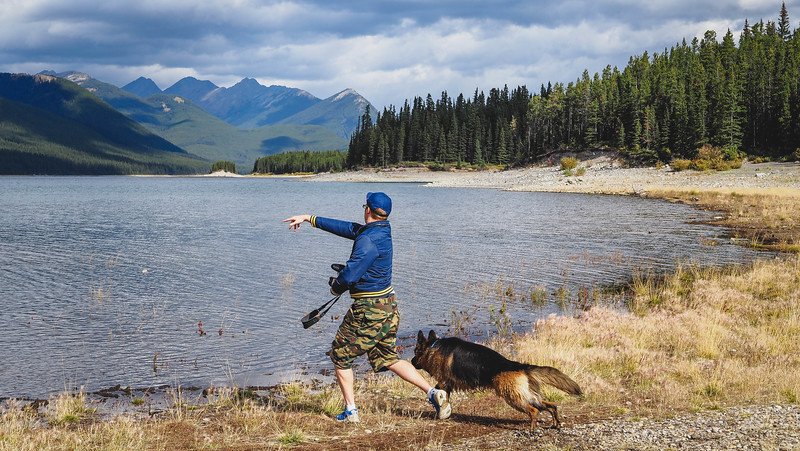
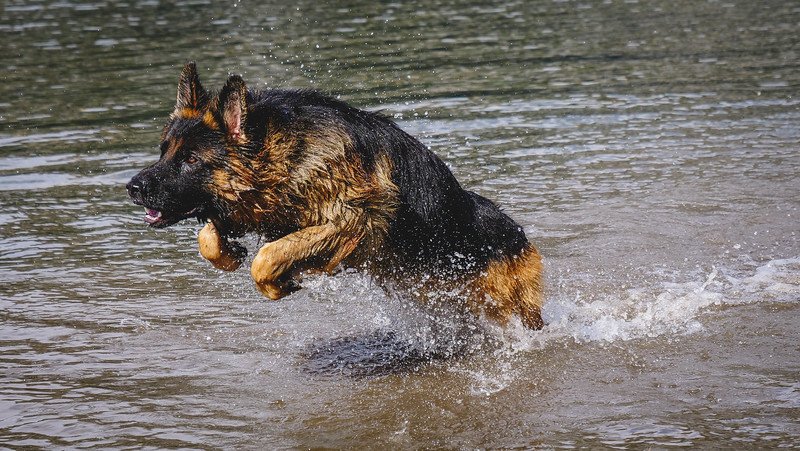
Also, I am not exaggerating when I say that our family had this entire place to ourselves. The nice thing about this park system is that if you’re willing to veer off the well-trodden path, you can find places to enjoy all on your own.
Another highlight of our Canadian Rockies road trip was spotting Bighorn Sheep! We were driving on a small side road when these guys started crossing right in front of us. We had seen some wildlife from afar, but this was our first sighting up close.
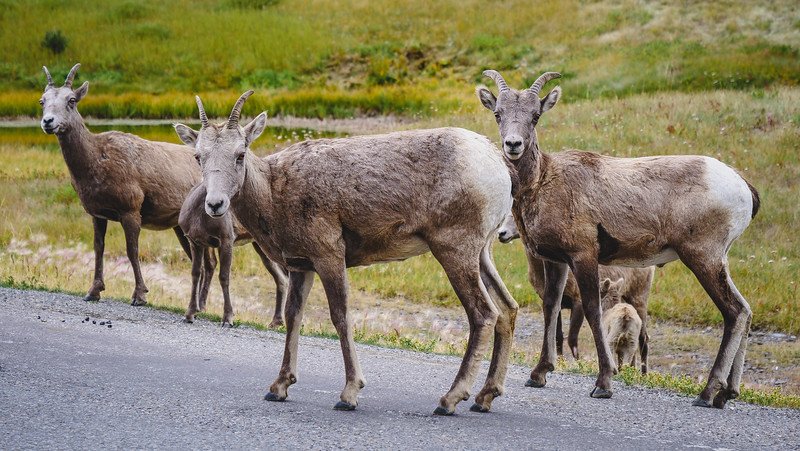
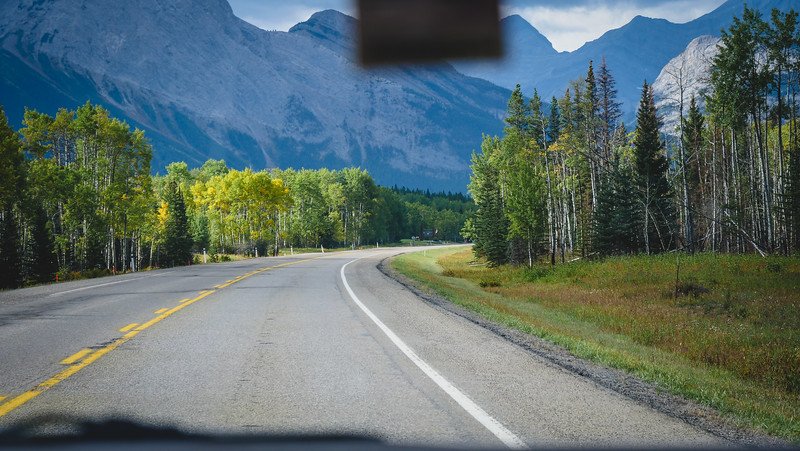
Cascade Ponds
Lake Minnewanka may get all the attention, and yes, she’s a beauty, but before reaching this well-known lake, there’s a small detour for Cascade Ponds. We discovered this place thanks to my sister and it was a pretty magical spot.

The whole area felt like a well-kept secret with no crowds at all, not to mention the beautiful views! We had these glass-like ponds, lush forest, and then the mountain tops peeking just behind.

And can we just take a moment to admire our dog who was absolutely loving it?
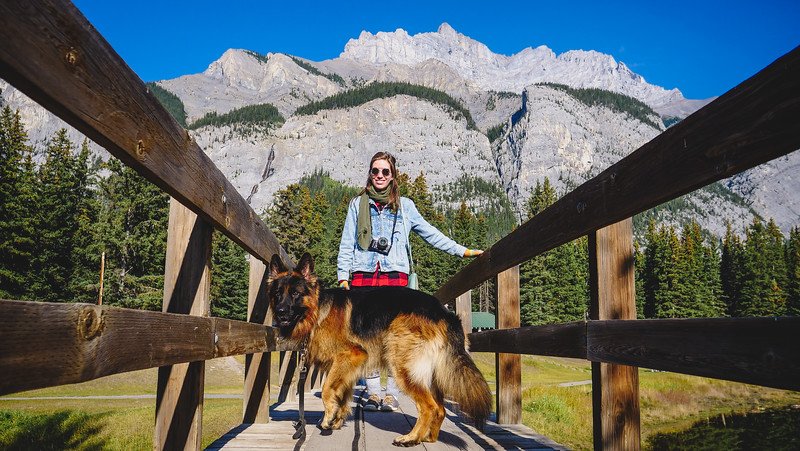
Lake Minnewanka
From Cascade Ponds we continued on to Lake Minnewanka, which means “the Water of the Spirits”. This is a glacial lake and it’s the second longest of all the lakes found in the Canadian Rockies.
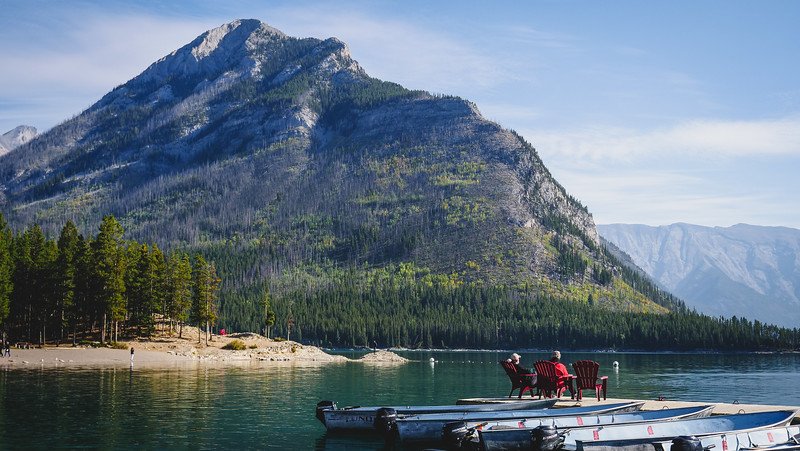
This is a popular spot for boat cruises, but we were pretty happy to do some light hiking. There were also plenty of benches and red Adirondack chairs for everyone to use – not a bad place to sit down and just soak in the natural beauty!
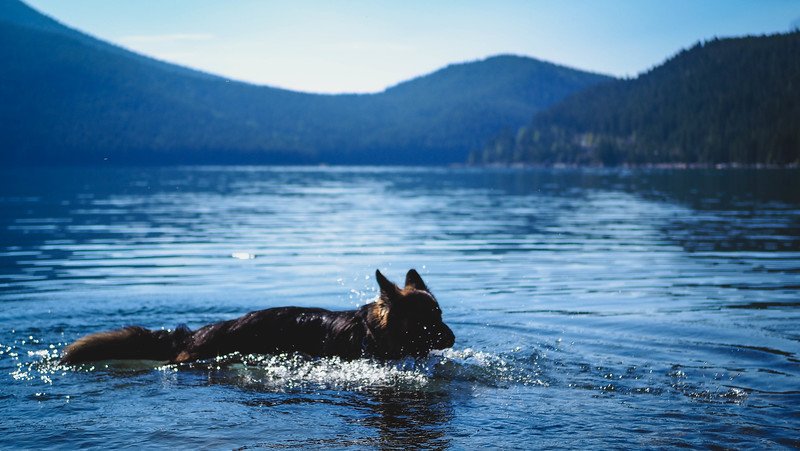
The Paint Pots
Now for an unusual find, here are the Paint Pots, which are located in Kootenay National Park. They are these colourful ponds and small lagoons that range in colour from rust and ochre to lime green – colours you don’t exactly see in nature every day!
That’s right, it wasn’t all mountains on this Rocky Mountains road trip.
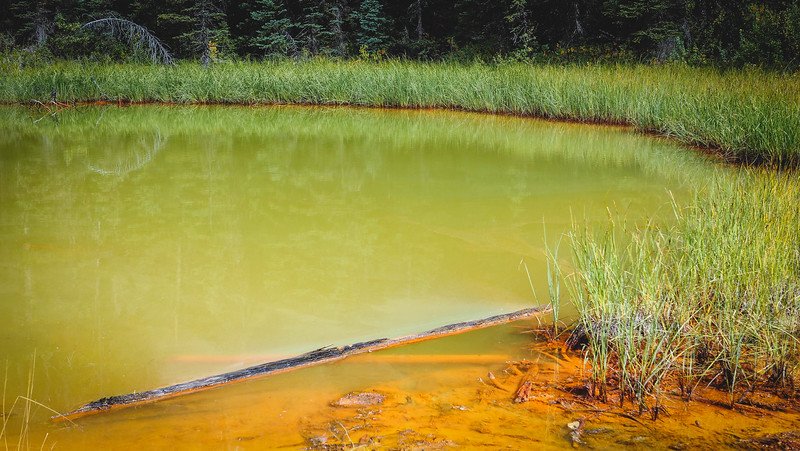
The ponds are part of a natural spring system with iron oxide which produces the orange-reddish colour on the ground. The ochre you see here was especially important to the Aboriginal peoples who gathered it for centuries to be used in ceremonies as well as for trade.

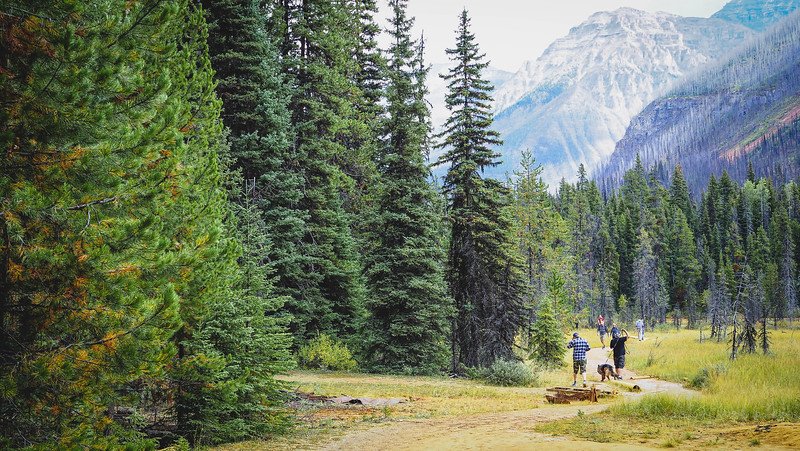

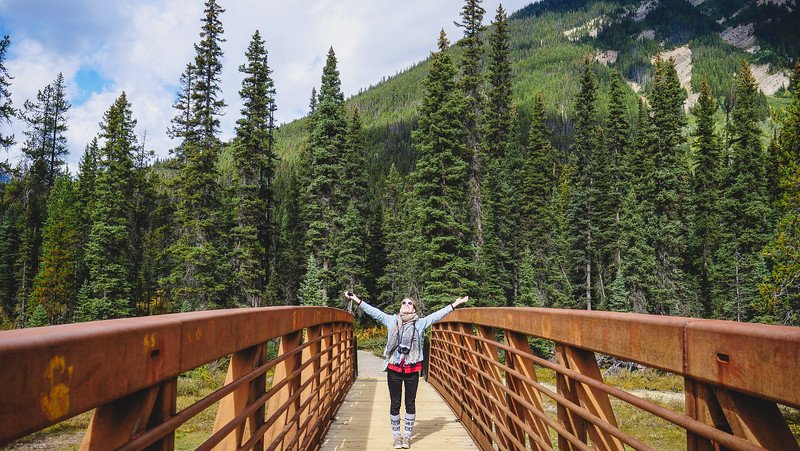
Reaching the Paint Pots involved a short and pleasant hike through the forest, over the bridge across the Vermillion River, and along a wooden boardwalk when things got a little muddy.
This detour turned out to be a very pleasant surprise! We didn’t know what to expect when we first noticed the sign for the Paint Pots off the side of the highway, but it was well worth the visit.
Policeman’s Creek Boardwalk
Another spot that I really enjoyed was Policeman’s Creek Boardwalk in Canmore. We came across it completely by chance when we were looking for a quieter street to park the car, and it was perfect for a light stroll. This is a very easy trail that runs 3.9 kilometres along natural wetlands and forest and it’s accessible right from the downtown.
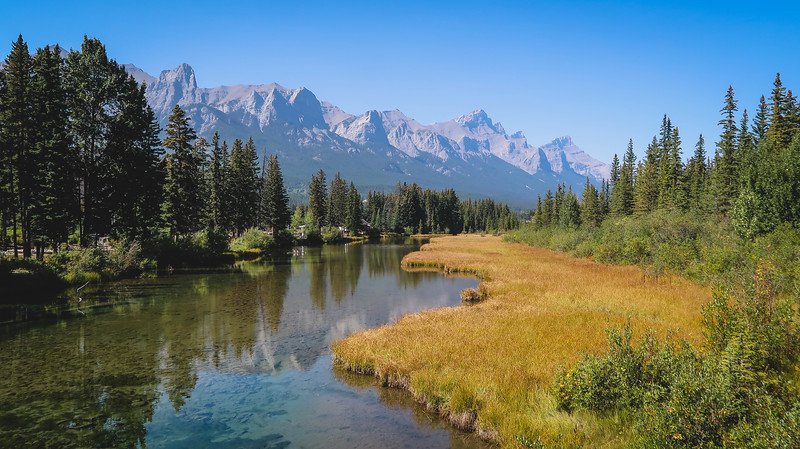
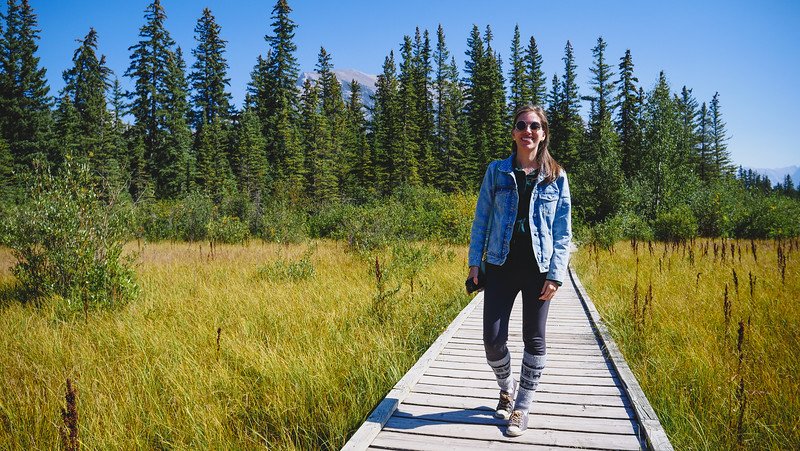
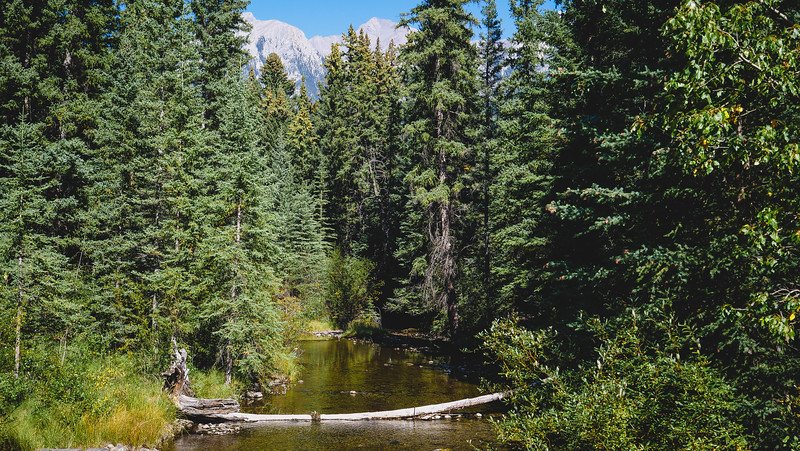
We may not have done a whole lot of sightseeing around Canmore, but I’m glad we didn’t miss out on this.
Moraine Lake
Moraine Lake was yet another beauty you can’t miss on your Canadian Rockies road trip.
Maybe it was the time of day and the right lighting conditions, but the colour of the water looked out of this world! It was somewhere between turquoise and electric blue, and it was slightly hypnotizing.
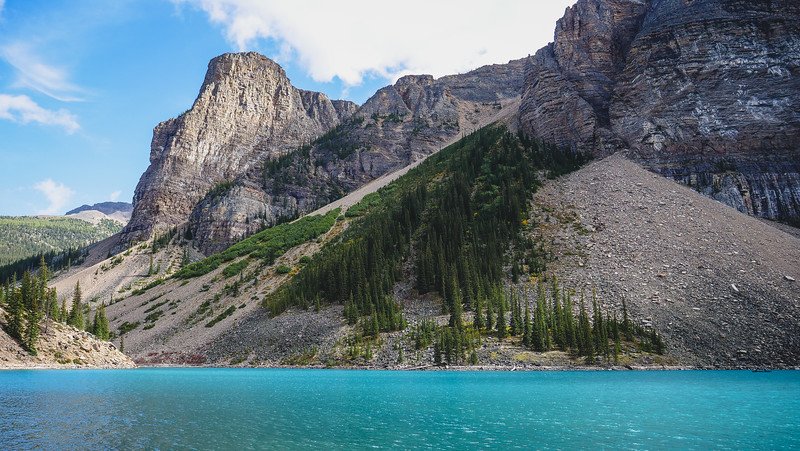
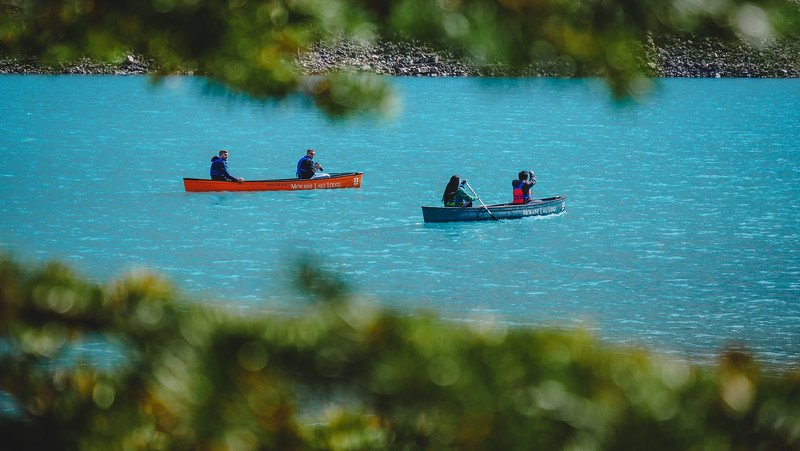
Some tourists were climbing the Rockpile for postcard-perfect views, others were out canoeing on the lake, and we just sat down on a tree log to enjoy the towering peaks covered in snow.
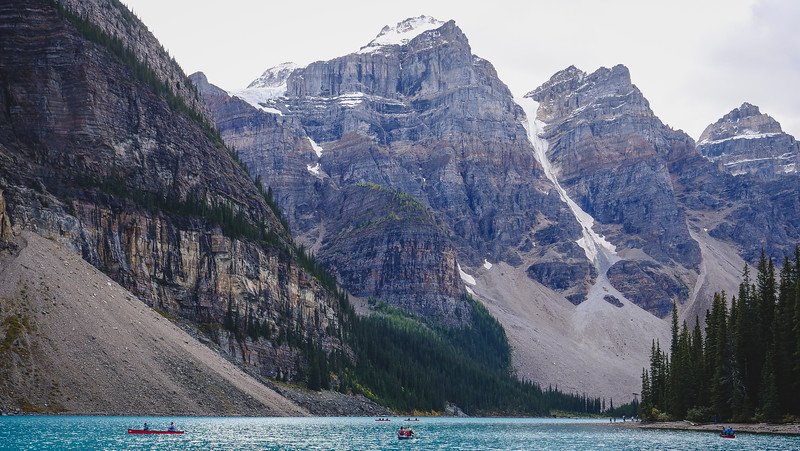
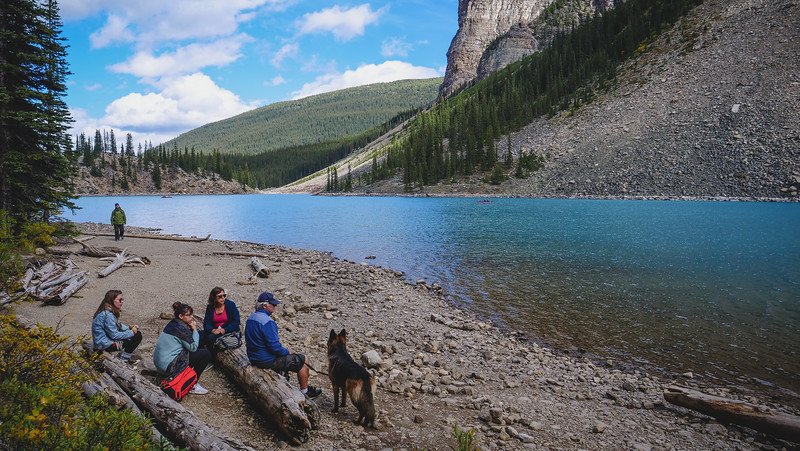
The Continental Divide
This next stop was a 3-for-1 deal and an interesting border of sorts.
Firstly, this is the line that divides Kootenay National Park and Banff National Park; secondly, it divides the provinces of British Columbia and Alberta; and thirdly, it separates the watersheds where rivers begin to flow either towards the Pacific or the Atlantic.
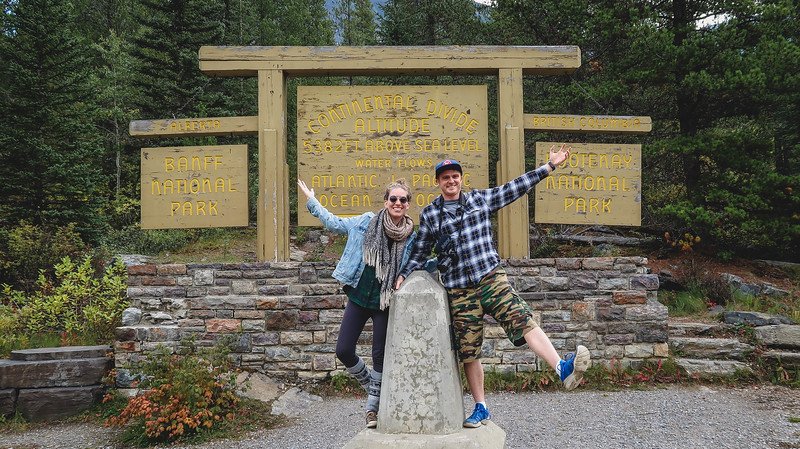
Of course, we had to stop and pose for a photo! Pretty cool that at that very moment, Sam and I were each standing in a different province.
Lake Louise
Last but not least, it wouldn’t feel right not to mention Lake Louise! Yes, she may be the most well-known lake around and you are guaranteed to find crowds there almost any time of day, but it’s a natural marvel.
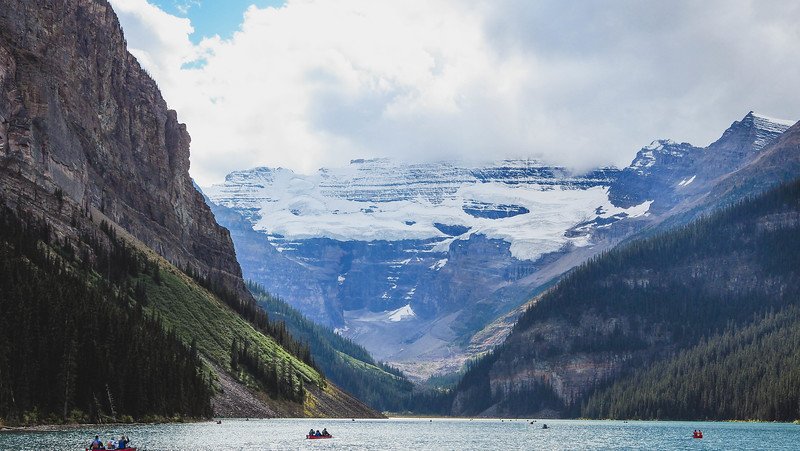
For me, this place was all about Victoria Glacier taking centre stage, the mountains that frame it on either side, and the turquoise waters of Lake Louise twinkling in the foreground.

There were lots of red canoes out on the water that day and they were popping!
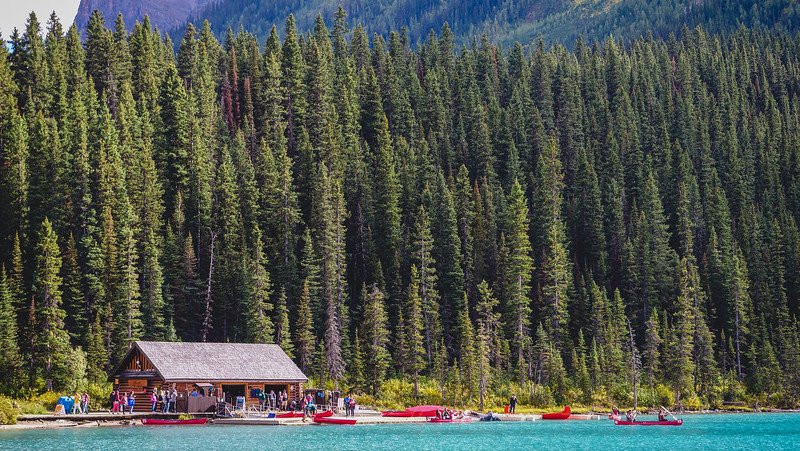
And those are just a few of the places that we visited on our road trip through the Canadian Rockies! I know that barely scratches the surface, but you can bet we’ll be coming back for more. This road trip was but an introduction to the beauty of the Rocky Mountains and we’re hooked!
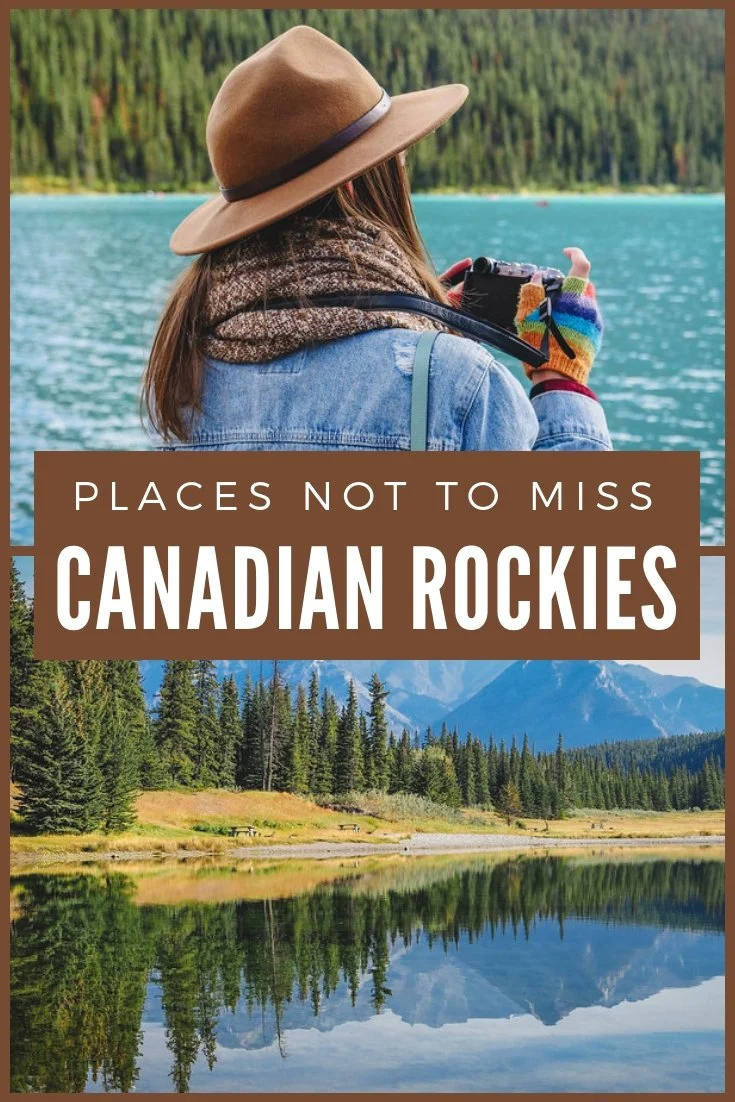
Canadian Rockies Road Trip Planner: Routes, Seasons & Tips

How Long Do You Need? (Sample Itineraries You Can Copy-Paste)
3-Day “First Taste” Sampler
- Day 1: Calgary ➝ Kananaskis Country (Upper/Lower Kananaskis Lakes) ➝ Canmore sunset stroll on Policeman’s Creek Boardwalk.
- Day 2: Banff townsite loop: Cascade Ponds picnic ➝ Lake Minnewanka shoreline walk ➝ Bow Valley Parkway wildlife drive at dusk.
- Day 3: Moraine Lake rockpile sunrise ➝ Lake Louise lakeshore trail ➝ back to Calgary.
Why it works: Minimal hopping between bases, lots of high-reward views, and time to linger at each stop.
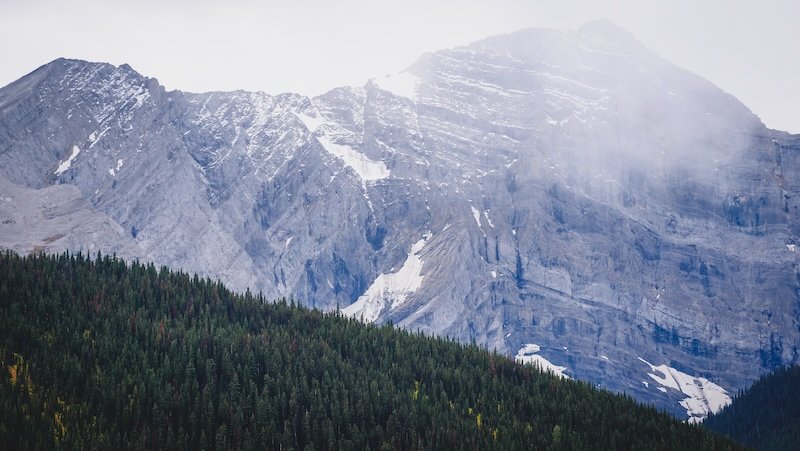
5–7 Day “Classic Rockies”
- Day 1: Arrive Calgary ➝ Kananaskis.
- Day 2: Canmore hikes (Grassi Lakes or Grotto Canyon) ➝ Banff evening.
- Day 3: Lake Minnewanka & Cascade Ponds ➝ Banff Gondola or Johnson Lake swim (summer).
- Day 4: Lake Louise + Moraine Lake (sunrise/late afternoon split to avoid peak hours).
- Day 5: Yoho National Park (Emerald Lake, Natural Bridge) ➝ Kootenay’s Paint Pots detour.
- Day 6: Icefields Parkway day trip (Bow Lake, Peyto viewpoints, misty waterfalls).
- Day 7: Flex day for weather, wildlife, or a spa/soak (Banff Upper Hot Springs).
Why it works: Balances headliners and quieter pockets, with a built-in weather buffer.
10-Day “Grand Circle”
Add Jasper (Maligne Lake, Athabasca Falls), an extra Kananaskis day (Rawson Lake/Elbow Lake), and a slow day along the Icefields Parkway for short hikes and glacier viewpoints. This version is for those who like a quality linger.
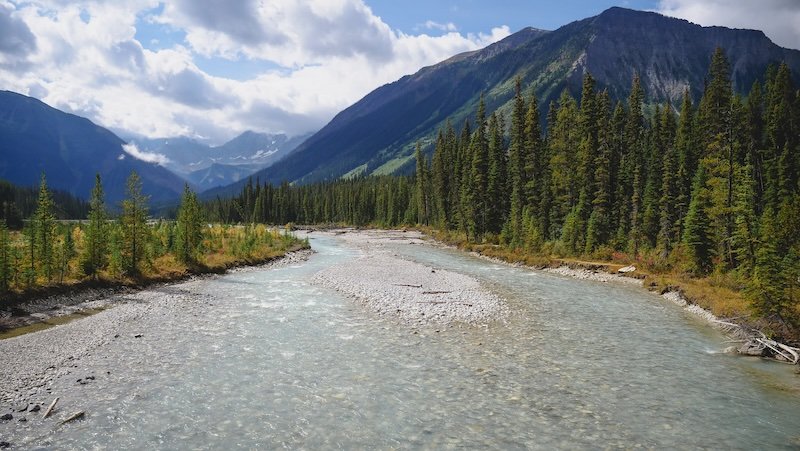
When to Go (Season by Season)
Spring (April–June)
- Vibe: Waterfalls roar, wildlife is active, higher trails can still be snowy.
- Pros: Lower prices, fewer crowds, dramatic rivers.
- Watch for: Shoulder-season closures; carry microspikes if you hike early season.
Summer (July–August)
- Vibe: Prime time for turquoise lakes, long daylight, alpine meadows.
- Pros: Everything’s open; great for families, paddling, and picnics.
- Watch for: Parking fills early at marquee lakes; build in shuttles/early starts.
Fall (September–October)
- Vibe: Crisp mornings, golden larches in higher bowls, quieter roads.
- Pros: Photographers’ dream; wildlife rut (view from a safe distance!).
- Watch for: Cooler temps; bring layers and be ready for early snow at elevation.
Winter (November–March)
- Vibe: Snow globe magic; skating on wild lakes when conditions cooperate.
- Pros: Northern-lights potential on clear, dark nights; great for skiing/boarding.
- Watch for: Road conditions, avalanche terrain (stick to maintained areas unless trained).
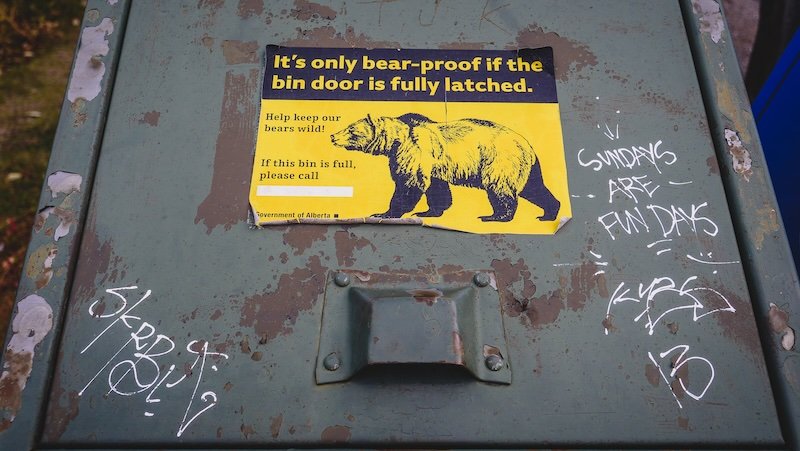
Getting Around & Practical Essentials
- Car is king: The Rockies are a road-trip playground. Book early in peak season and choose winter tires if visiting in colder months.
- Park pass: You’ll need a valid Parks Canada pass for national park areas—day passes or annual Discovery Passes are the usual choices.
- Shuttles & timed systems: Some hotspots use shuttles or timed access in busy months (e.g., popular lakes). Check current logistics and book in advance.
- Fuel & food: Top up when you can; distances are big and services spread out. Carry snacks and water.
- Pets: Leash rules apply in parks and on most trails. Pack water, waste bags, and a towel for lake-loving pups (Togo-approved!).
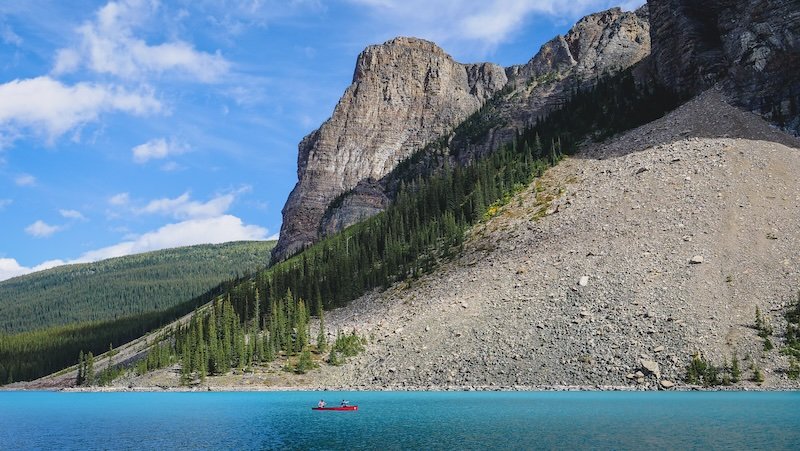
The Lakes, Compared (Pick Your Perfect Blue)
| Lake | Best For | Signature Look | Access & Crowd Notes | Photo Tip |
|---|---|---|---|---|
| Lake Louise | Iconic “first-timer” moment | Victoria Glacier + minty turquoise | Very popular; arrive early or use shuttles in peak | Polarizer to tame glare; red canoes make a great focal point |
| Moraine Lake | Drama + rockpile panorama | Ten Peaks stacked like a postcard | Peak-time logistics can be restrictive; plan sunrise/late | Wide-angle from the rockpile; verticals show height |
| Lake Minnewanka | Picnics, shoreline walks, boat cruises | Long glacial fjord vibe | Easier parking than the marquee duo; excellent at golden hour | Include shoreline foreground (logs/rocks) for depth |
| Emerald Lake (Yoho) | Reflections + mellow loop | Green-tinted mirror & forested amphitheatre | Less hectic; still busy midday | Watch for calm mornings; reflections are chef’s kiss |
| Bow/Peyto Lakes (Icefields) | Roadside wow-stops | High-elevation blues with rugged backdrops | Viewpoints near the highway; short walks | Get low with alpine flowers for a frame-in-frame effect |
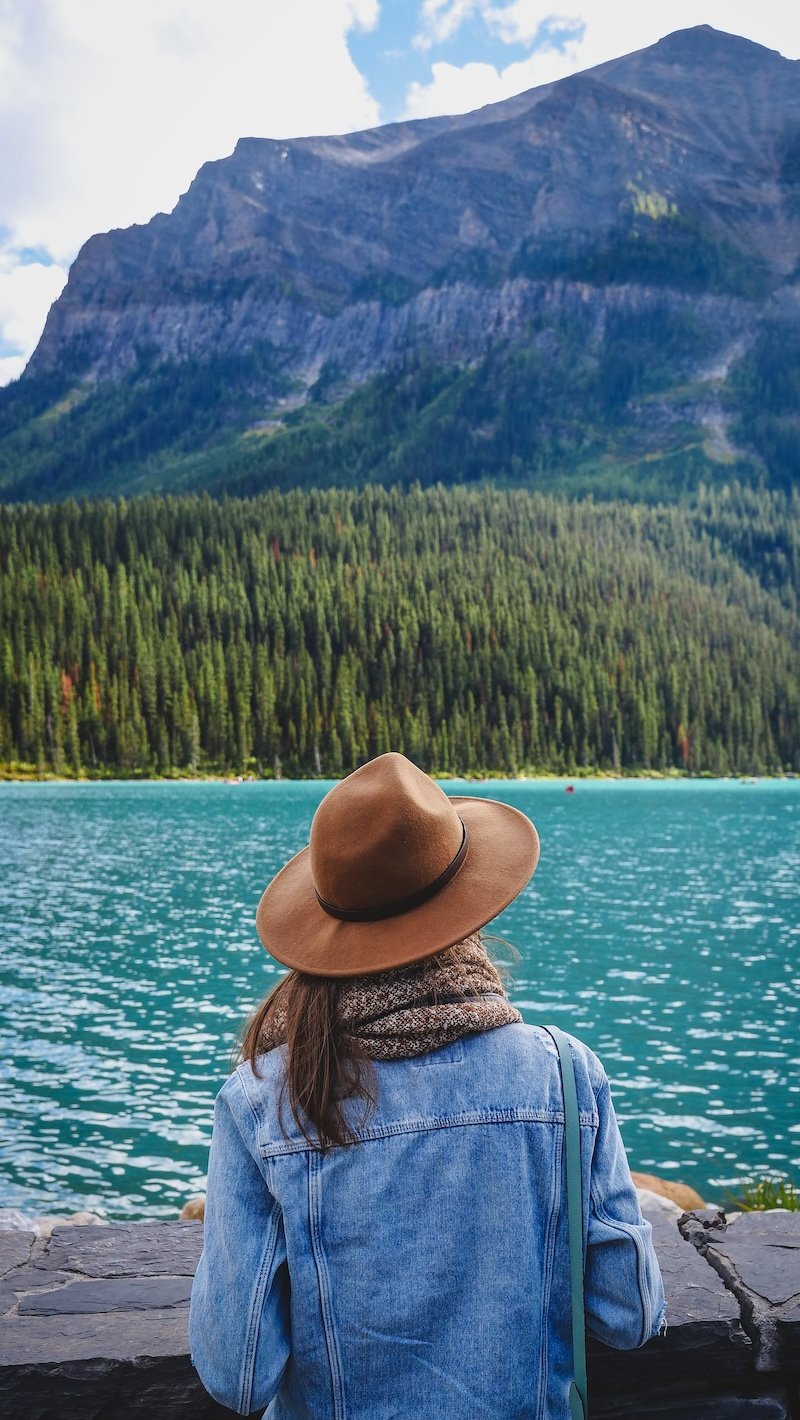
Easy Trails & Strolls (Family- and Dog-Friendly)
- Policeman’s Creek Boardwalk (Canmore): 3.9 km, flat, boardwalk + forest. Birds, beavers, and mountain silhouettes at sunset.
- Cascade Ponds Loop (Banff): Create-your-own loop around placid pools. Picnic tables, bridges, swimmer-friendly on hot days.
- Lake Louise Lakeshore: Flat there-and-back to where the crowds thin. Keep going for glacial silt patterns and quieter coves.
- Johnston Canyon (Bow Valley Parkway): Catwalks to Lower/Upper Falls; go early or late for a more tranquil experience.
- Fenland Trail (Banff): Short woodland loop on the edge of the townsite. Moose sometimes wander through (admire from afar!).
- Paint Pots (Kootenay): Gentle stroll over the Vermilion River to ochre pools—unusual colours and geology lesson baked in.
Always check current trail conditions—snow, ice, or seasonal wildlife closures can change the plan.
Adventure Match-up: Canoe vs. Hike vs. Gondola
| Experience | Time Needed | Fitness | Best For | Our Take |
|---|---|---|---|---|
| Canoe a turquoise lake | 1–2 hours | Light | Iconic photos, serene vibes, non-hikers | Pricey but memorable; go early for calm water |
| Lakeshore hike/stroll | 30–120 mins | Easy | Families, dog-walkers, snack stops | Low effort, high reward; perfect picnic pairing |
| Lookout hike (short & steep) | 2–4 hours | Moderate | Big views, larch season, sunrise/sunset fans | Pack layers/bear spray; trail rewards are huge |
| Gondola to a summit boardwalk | 1–3 hours | Easy | All-weather views, multigenerational groups | Time it for late light and fewer crowds |
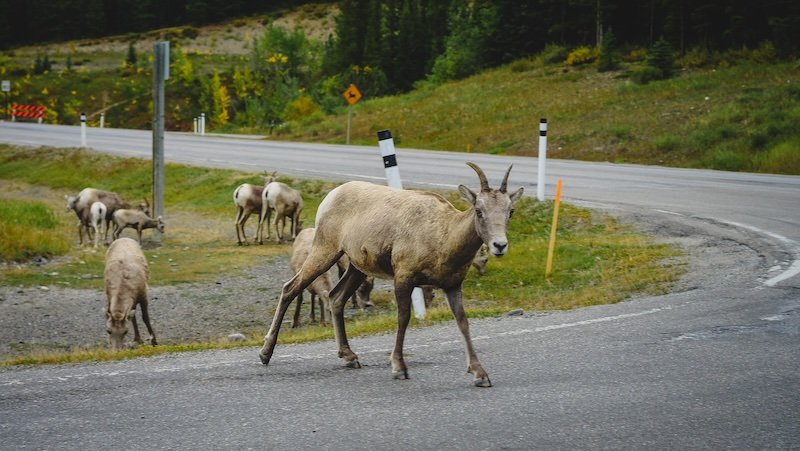
Wildlife 101: See Them Safely
- Bighorn sheep: Often roadside—pull fully off and give them space to cross.
- Elk: Keep a very wide berth during rut and calving. Antlers aren’t just for decoration.
- Bears: Carry bear spray, make noise on trails, hike in groups when possible, and store food properly. If you see a bear, stay in your vehicle or back away slowly, giving lots of room.
- All wildlife: Use the zoom, not your feet. If an animal changes behaviour (stops feeding, looks up, moves away), you’re too close.
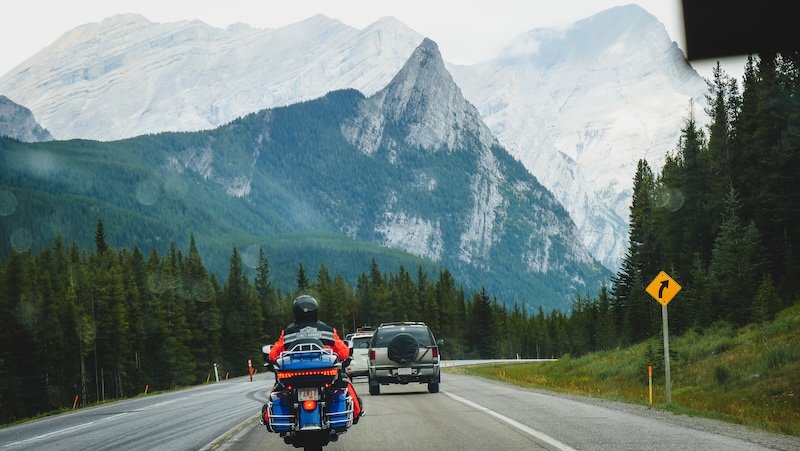
What to Pack (Tried & Tested Checklists)
Daypack Essentials
- Refillable water bottle or hydration bladder
- Snacks (nuts, fruit, jerky, trail mix)
- Sunscreen & lip balm with SPF
- Hat, sunglasses, and a light buff
- Light rain shell + warm mid-layer (yes, even in summer)
- Small first-aid kit + blister care
- Map/GPX on your phone (offline) + power bank
- Bear spray (know how to use it)
- Headlamp if you like sunrise/sunset
Car Kit
- Extra water & a soft cooler for picnics
- Paper map for no-signal stretches
- Microfibre towel (for spontaneous swims and dog shakes)
- Blanket (picnics, chilly dawns)
- Windshield sunshade (park lots get toasty)
- Emergency kit (booster cables, tire inflator, basic tools)
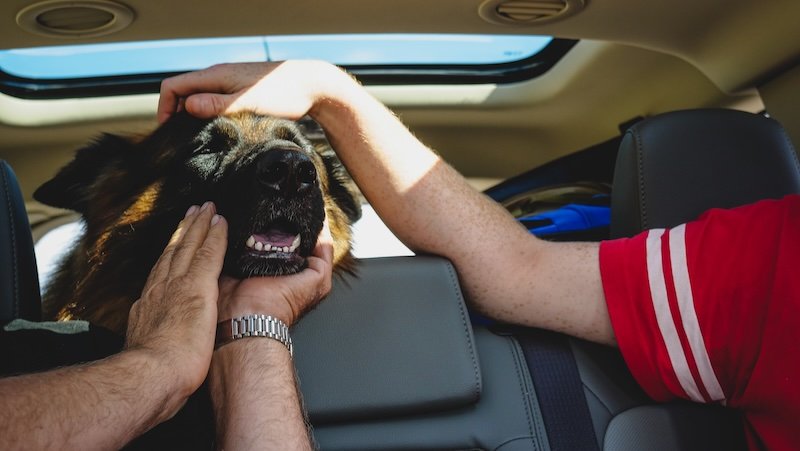
Togo’s Trail-Ready Pack (Pet Parents, This One’s for You)
- Leash + backup slip lead
- Collapsible bowl & water
- Poop bags & a sealable odour-proof pouch
- Quick-dry towel
- Booties if your dog is paw-sensitive on rocky shores
- A warm layer if you’ll be out at dawn/dusk (thin-coated pups get chilly)
- Treats! For training around wildlife distractions
Photo Kit (For the Lake-Colour Chasers)
- Polarizing filter (cuts glare, deepens colour)
- Lens cloths (spray and dust are inevitable)
- Wide-angle for lakes, telephoto for wildlife (from afar)
- Tripod only where allowed and safe; otherwise brace on rocks/logs
- Spare batteries (cold temps zap them fast)
Where to Stay: Hotels, Cabins, or Camping?
| Stay Type | Best If You… | Pros | Cons | Tips |
|---|---|---|---|---|
| Hotels/Lodges | Want easy logistics & comfort | Central locations, on-site dining | Pricey in peak, books early | Midweek stays often cheaper; bundle with gondola/attraction deals |
| Cabins/Chalets | Like homey space & kitchens | Great for families; self-catering | Limited availability | Book months ahead for summer/fall; look in Canmore for value |
| Camping | Love starry skies & crackling fires | Budget-friendly; nature at your door | Sells out fast; weather swings | Reserve when booking windows open; have a back-up non-serviced site in mind |
| Pet-Friendly Options | Travel with four paws | Trails and parks right outside | Extra cleaning fees sometimes | Confirm pet policies & nearby off-leash areas in advance |
Budgeting at a Glance (Very Ballpark)
- Accommodation: From budget motels and campsites to luxe lakeside splurges—prices span widely with season and location.
- Canoe rentals & gondolas: Memorable but premium—plan one or two “big-ticket” experiences that matter most to you.
- Fuel & food: Factor in mountain driving and picnic-friendly groceries; eating out in Banff/Lake Louise costs more than in Canmore/Calgary.
- Park pass: Build it into your total—it’s essential and supports the places you’re here to enjoy.
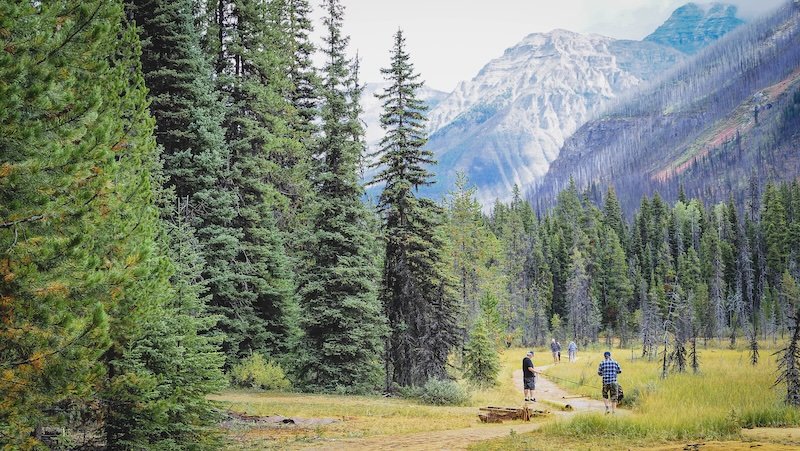
Leave No Trace & Travel Kind
- Pack it in, pack it out: Even tiny bits (fruit peels, tea bags) alter wildlife behaviour.
- Stay on trail: Protects fragile alpine plants and keeps you safer.
- Respect closures: They exist for your safety and wildlife well-being.
- Quiet hours: Your campsite neighbours (and the night sky) will thank you.
- Learn as you go: Many places acknowledge the traditional territories of Indigenous Peoples—take time to read on-site info boards and support Indigenous-led experiences when you can.
Accessibility & Family-Friendly Tips
- Strollers & wheels: Boardwalks and lakeshore paths (Louise/Minnewanka/Emerald) are doable with sturdy strollers and many mobility devices—expect some gravel and gentle grades.
- Breaks: Build snack stops and “run around” time into your day—Cascade Ponds is perfect for this.
- Weather: Dress kids (and grown-ups!) in layers you can add/remove easily.
- Nap windows: If your littles nap in the car, use that time for scenic drives like the Bow Valley Parkway or short stop-lookouts.
Canadian Rockies Road Trip FAQ
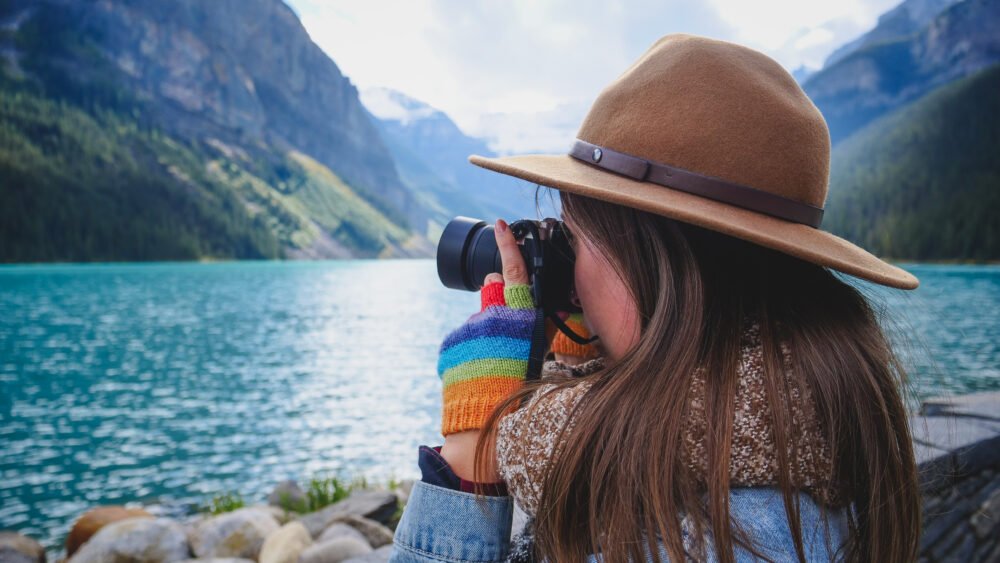
How many days do I need for a first-time Canadian Rockies road trip?
Three full days will give you a highlight reel (Kananaskis, Banff, Lake Louise/Moraine Lake), but five to seven days lets you slow down, add Yoho/Kootenay, and slot in a weather buffer so you’re not sprinting between views.
What’s the best month to visit for turquoise lakes and hiking?
July and August are the sweet spot for fully-thawed turquoise lakes and open alpine trails, with long daylight. If you prefer fewer crowds and cooler temps, try early to mid-September when larches start to glow.
How early should I arrive at the big-name lakes?
Think “sunrise-early” in peak season. Aim for first light or plan late-afternoon/early-evening visits. If shuttles or timed systems are operating, reserve ahead so you’re not turned around at the last minute.
Are dogs allowed on trails and at lakes?
Yes, in most places with a leash. Keep pups out of sensitive shoreline zones, carry water for them, and be bear-aware—dogs can trigger defensive wildlife behaviour if they’re off-leash.
Do I really need bear spray?
It’s strongly recommended for hikers. Carry it where you can reach it, and learn how to use it. Make noise on trails, hike in groups when possible, and give wildlife ample space.
Can I see a lot without doing long hikes?
Absolutely. Many of the Rockies’ most famous views are steps from parking areas or accessible via short, flat paths—think lakeshores, boardwalks, scenic pullouts, and gondolas.
Where can I avoid the biggest crowds?
Start your days in Kananaskis, wander Cascade Ponds for picnics, stroll Policeman’s Creek in Canmore, and time Yoho’s Emerald Lake early or late. Even popular places have quiet corners if you go off-peak.
What should I wear for changeable mountain weather?
Layers. A breathable base, warm mid-layer (fleece/down), wind/rain shell, quick-dry bottoms, and sturdy shoes. Pack a hat and gloves outside midsummer—mountains love a weather plot twist.
Is it worth bringing a canoe/kayak or should I rent?
If you’re road-tripping with roof racks and plan to paddle often, bringing your own can be great. Otherwise, rent on-site for that one iconic paddle and save the roof real estate for snacks.
How do I plan meals on a road trip like this?
Mix picnics and eat-outs. Stock up on groceries in Calgary/Canmore, keep a cooler handy, and plan one or two special meals in Banff/Lake Louise. Picnic breakfasts at sunrise viewpoints are magical and practical.
Are there accessible options for travelers with limited mobility?
Yes. Many lakeshores, viewpoints, and visitor centres have paved or packed-gravel paths, accessible washrooms, and benches. Gondolas and boat cruises are also great ways to see the scenery without steep hikes.
What’s one mistake first-time visitors make?
Underestimating travel time and overpacking the schedule. Build in buffer time for photos, roadworks, wildlife slowdowns, and the simple pleasure of sitting on a lakeside log and saying “wow” a few dozen times.

Even though I’ve lived close to the Rockies for almost ten years, I still get ridiculously excited when I see a Bighorn Sheep (… and I’m still tempted to call them Mountain Goats!).
Ugh! I’ve been dreaming of visiting the Rockies again and this made my wanderlust so much worse. Looks so amazing!
xo Sam